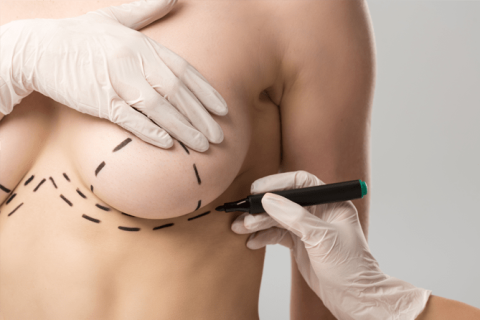Sculpting Confidence: A Definitive Guide to Breast Augmentation Surgery
In the vast tapestry of human form, the breasts represent a unique confluence of function and aesthetic. Yet, for some women, their breasts may not align with their desired appearance or self-image. Here, enters breast augmentation surgery, a meticulously crafted surgical masterpiece that sculpts confidence and reshapes silhouettes. This definitive guide delves into the essence of this procedure, exploring its nuances, possibilities, and considerations.
Unveiling the Canvas: What is Breast Augmentation Surgery?
Breast augmentation surgery, often referred to as augmentation mammoplasty, is a procedure designed to increase the size or reshape the breasts. It caters to women seeking:
- Enhanced volume: Whether due to natural development, breastfeeding, weight loss, or aging, some women desire fuller breasts for aesthetic reasons or to restore lost volume.
- Corrected asymmetry: Uneven breast size can cause imbalance and self-consciousness. Breast augmentation can achieve a more symmetrical and harmonious appearance.
- Reconstructive purposes: Following mastectomy due to cancer or other medical conditions, breast augmentation can restore breast tissue and reclaim a sense of wholeness.
Crafting the Masterpiece: Implants Used in Breast Augmentation Surgery
The artistry of breast augmentation is brought to life with the help of implants, small prostheses placed within the breast tissue to achieve the desired augmentation. Two main types exist:
- Silicone gel implants: Filled with a silicone gel, these implants provide a more natural look and feel due to their consistency resembling real breast tissue.
- Saline implants: These contain saltwater and are generally less expensive than silicone gel implants. They feel less like natural breast tissue but offer a more natural rippling effect, especially upon movement.
The choice of implant depends on various factors, including the patient’s desired outcome, body structure, and surgeon’s recommendations.
Building the Foundation: Who is Considered a Good Candidate for Breast Augmentation Surgery?
While the allure of enhanced confidence may be universal, certain aspects make individuals ideal candidates for breast augmentation surgery:
- Physical health: The presence of chronic illnesses or uncontrolled medical conditions can increase surgical risks. A thorough health evaluation is crucial before the procedure.
- Completed breast development: Suitable candidates are typically 18 years or older and have finished their natural breast development.
- Realistic expectations: Understanding the limitations and potential outcomes of the surgery is essential for setting realistic expectations and ensuring satisfaction.
- Psychological preparedness: Breast augmentation is a personal choice, and it’s vital to ensure that the patient is emotionally prepared for the procedure and its implications.
A Journey of Transformation: How is Breast Augmentation Surgery Performed?
The intricate art of breast augmentation unfolds step-by-step:
- Anesthesia: General anesthesia is administered to ensure patient comfort and safety throughout the procedure.
- Incisions: Precise incisions are made, typically in the crease beneath the breast (inframammary) or around the nipple-areola complex (periareolar). The location depends on the surgeon’s technique and patient’s anatomy.
- Pocket creation: A space is carefully formed within the breast tissue or beneath the pectoral muscle to accommodate the implant.
- Implant placement: The chosen implant is meticulously positioned within the prepared pocket, ensuring proper size, symmetry, and natural appearance.
- Closure: The incisions are meticulously closed with sutures, leaving minimal scarring.
Nurturing the Masterpiece: Considerations After Breast Augmentation
Following the artistry of breast augmentation, a dedicated path to optimal recovery is vital:
- Initial discomfort and swelling: These are expected and manageable with pain medication and rest.
- Limited physical activity: Strenuous activities should be avoided for several weeks to allow proper healing.
- Drainage tubes: In some cases, small tubes may be placed temporarily to remove excess fluid.
- Suture removal: Stitches are typically removed after 7-10 days.
- Follow-up appointments: Regular check-ups with the surgeon are crucial to monitor progress and address any concerns.
- Maintaining a healthy lifestyle: A balanced diet and regular exercise help maintain body weight and optimize long-term results.
Breast augmentation surgery can be a life-changing experience, one that transcends a physical transformation. It can empower women with newfound confidence, enhance their body image, and ultimately, empower them to embrace their authentic selves. By understanding the intricacies of the procedure, potential candidates can embark on this journey with informed decisions and realistic expectations, ready to unveil the masterpiece within.


